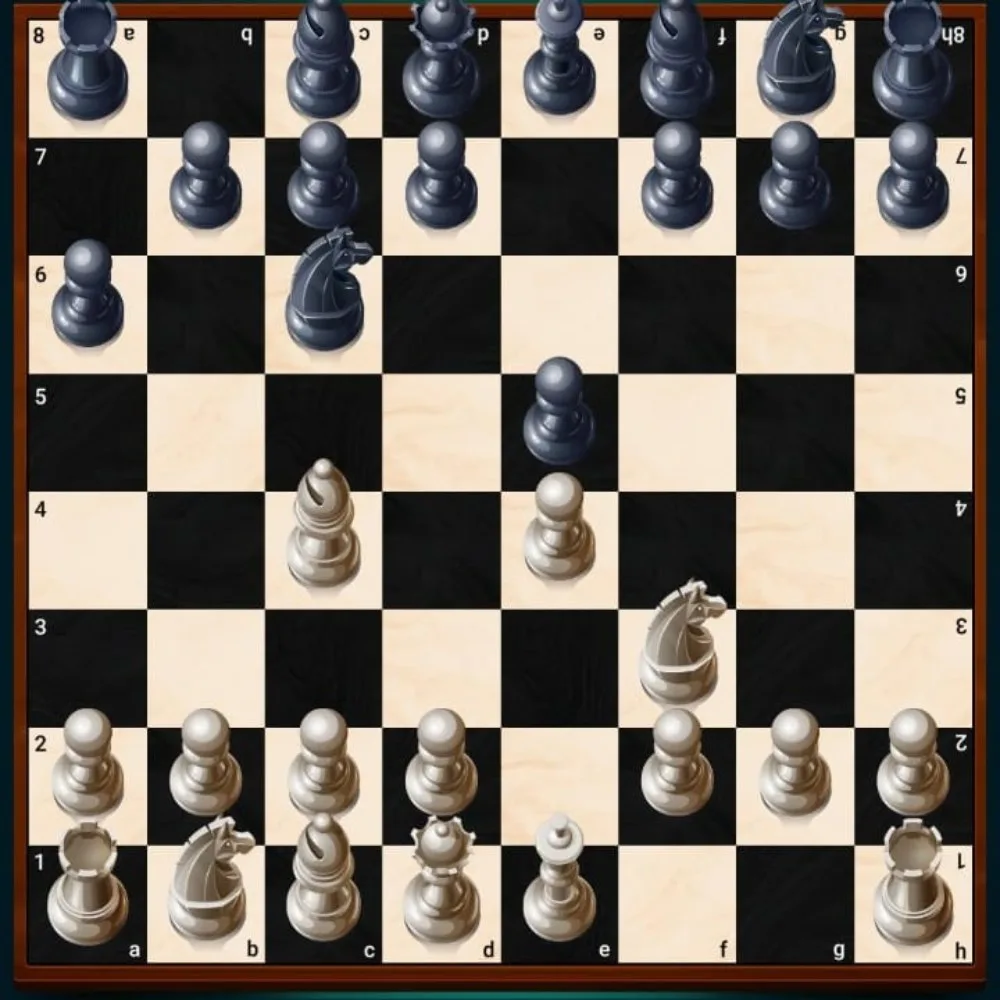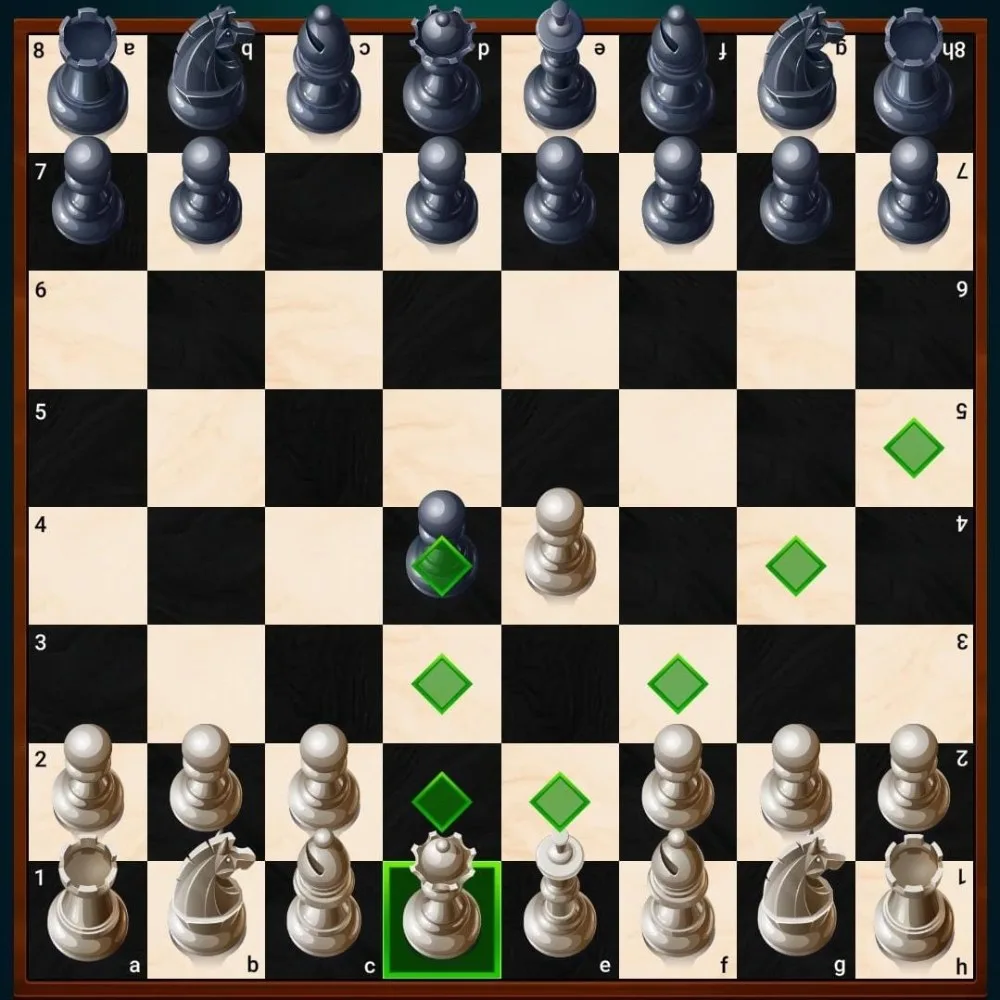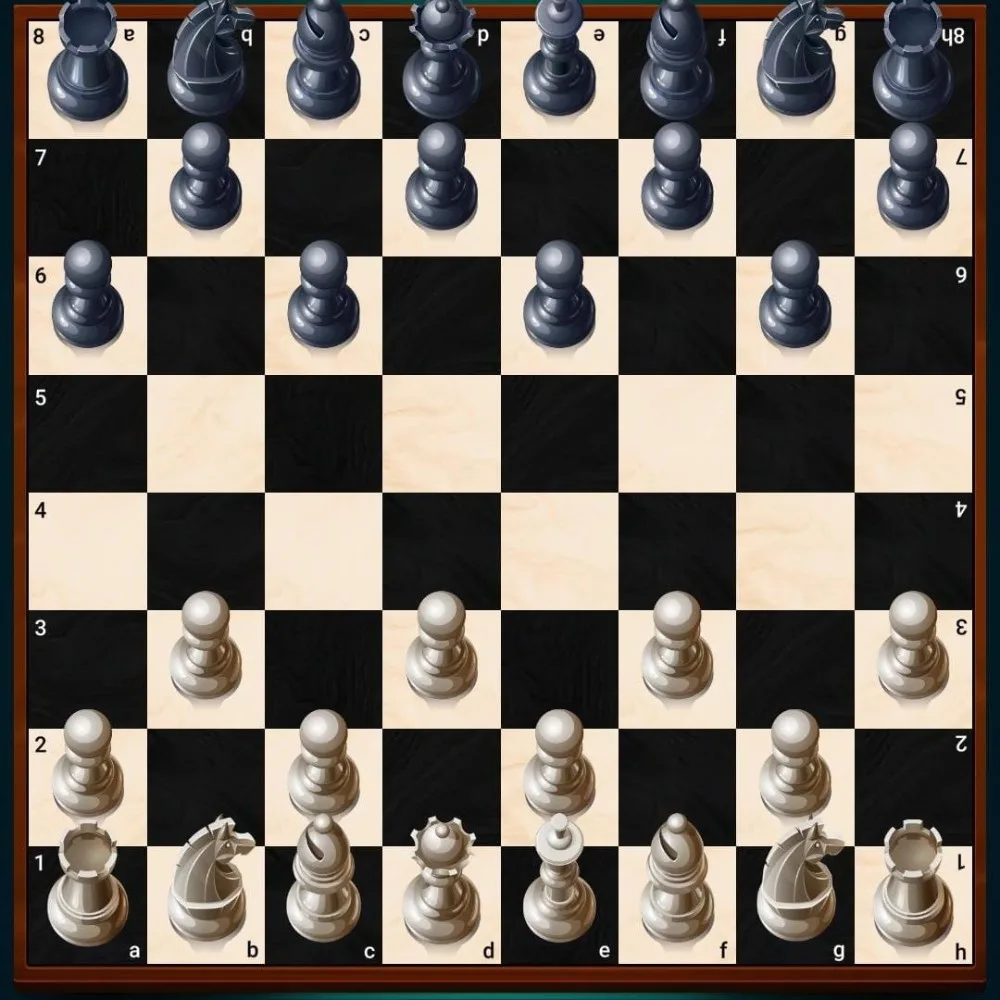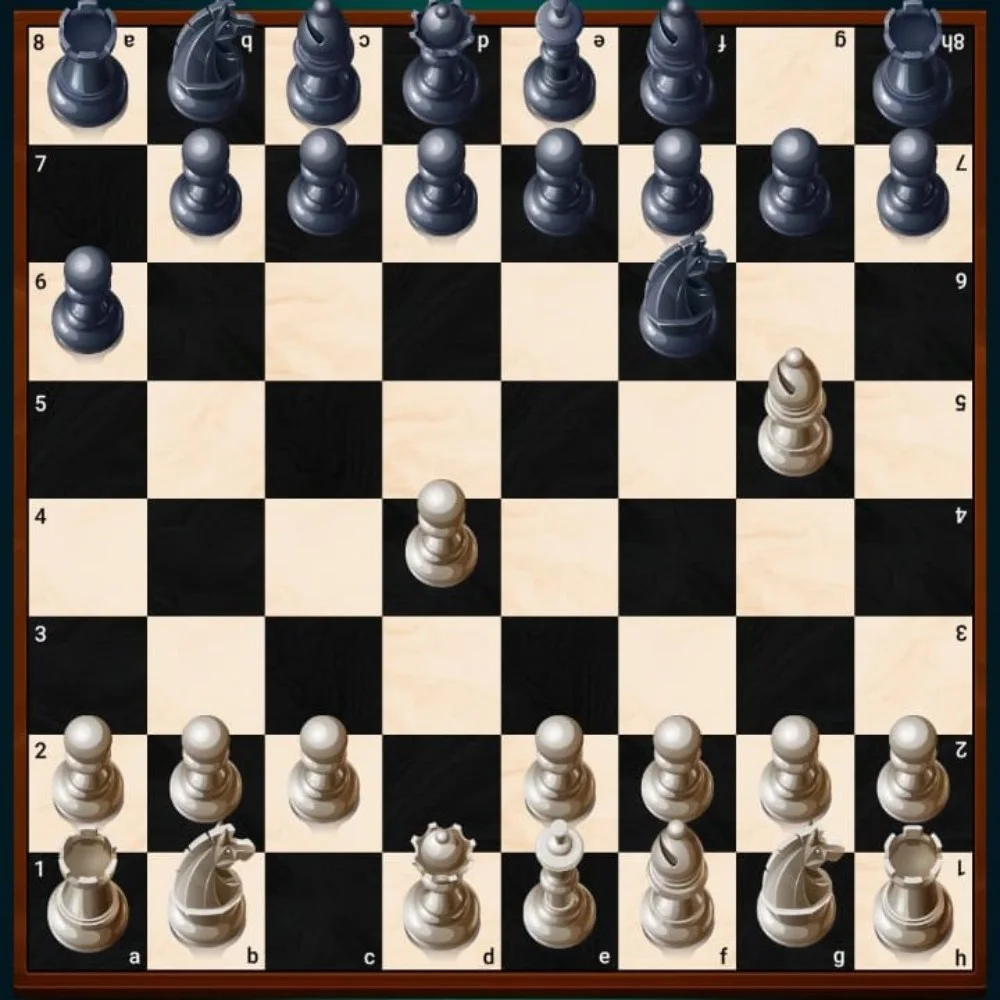In chess, the opening moves are crucial in shaping the game’s trajectory. These initial strategies, varying from aggressive assaults to subtle positional plays, lay the groundwork for the ensuing battle.
The choice of opening reflects a player’s tactical approach, whether seeking immediate board dominance or gradually building up to a powerful middlegame. Openings in chess are about setting the stage for the entire game, dictating the pace and style of play. While there are endless Chess opening moves, this guide will take a look at a few of the bests. Let’s jump in.
Overview of Best Chess Opening Moves in Chess (TL;DR)
| Strategy | Moves | Description |
| Italian Game | 1.e4 e5 2.Nf3 Nc6 3.Bc4 | Focuses on controlling the center and developing pieces for a strong middlegame. Leads to variations like the Giuoco Piano. |
| Ruy Lopez | 1.e4 e5 2.Nf3 Nc6 3.Bb5 | Aims to pressure the knight on c6, balancing piece activity with positional control. Includes variations like the Closed and Open Ruy Lopez. |
| Smith-Morra Gambit | 1.e4 c5 2.d4 cxd4 3.c3 | An aggressive gambit against the Sicilian Defense, sacrificing a pawn for rapid development and kingside attack. |
| Bird’s Opening | 1.f4 | Aims to control the e5 square, leading to aggressive play and unbalanced positions. Can transpose into the Dutch Defense. |
| Sicilian Defense | 1.e4 c5 | Known for its asymmetrical pawn structure and complex play, offering good counter-attacking chances for Black. |
| French Defense | 1.e4 e6 | Challenges White’s control of the center, leading to a strategic battle for space and positioning. |
| Vienna Game | 1.e4 e5 2.Nc3 | Offers flexibility for a quiet game or a tactical battle, with variations like the Fianchetto and Vienna Gambit. |
| King’s Indian Defense | 1.d4 Nf6 2…g6 3…Bg7 | Focuses on building a strong, flexible position, often leading to a pawn storm on the kingside. |
| Scholar’s Mate | 1.e4 e5 2.Qh5 Nc6 3.Bc4 Nf6 4.Qxf7# | A quick checkmate attempt, more of a trap than a solid strategy, often used against beginners. |
Classical and Positional Openings

These openings are characterized by their focus on piece development, control of the center, and preparation for the later stages of the game.
Hi! This post may contain affiliate links to online stores. If you use a link and buy something, I may get a commission at no extra cost to you. See my affiliate disclosure.
1. Italian Game
This opening begins with 1.e4 e5 2.Nf3 Nc6 3.Bc4. The primary focus is on controlling the center and preparing for a strong middlegame. The Italian Game often leads to two main variations: the Giuoco Piano (Quiet Game) with a slower, more positional buildup, and the Giuoco Pianissimo, which involves a delayed attack.
Moves breakdown:
- e4 (White moves the king’s pawn two squares forward)
- e5 (Black responds by moving their king’s pawn two squares forward)
- Nf3 (White develops the knight to f3, targeting the e5 pawn)
- Nc6 (Black develops the knight to c6, defending the e5 pawn)
- Bc4 (White moves the bishop to c4, targeting the vulnerable f7 square, a key point in Black’s position)
2. Ruy Lopez
Also known as the Spanish Opening, it starts with 1.e4 e5 2.Nf3 Nc6 3.Bb5. The Ruy Lopez is aimed at pressuring the knight on c6, which defends the e5 pawn. Key variations include the Closed Ruy Lopez, where Black delays the pawn break with …d6, and the Open Ruy Lopez, with an early …d5 by Black, leading to tactical play.
Moves breakdown:
- e4 (White advances the king’s pawn two squares)
- e5 (Black responds similarly, moving the king’s pawn forward)
- Nf3 (White develops the knight towards the center, targeting the e5 pawn)
- Nc6 (Black defends the e5 pawn by developing the knight)
- Bb5 (White moves the bishop to b5, pressuring the knight on c6 and indirectly the e5 pawn)
Aggressive and Tactical Openings

These openings are for players looking to challenge their opponents from the outset, often involving early attacks and sacrifices.
1. Smith-Morra Gambit
This is an aggressive line against the Sicilian Defense, starting with 1.e4 c5 2.d4 cxd4 3.c3. The gambit sacrifices a pawn for rapid development and attacking opportunities. Key ideas include quick development of the knights and bishops, aiming for a strong presence in the center and potential attacks on the black king.
Moves breakdown:
- e4 (White starts by moving the king’s pawn two squares forward)
- c5 (Black adopts the Sicilian Defense, advancing the c pawn)
- d4 (White immediately challenges Black’s pawn structure)
- cxd4 (Black captures the d4 pawn)
- c3 (White gambits the pawn, aiming for rapid development and central control)
2. Bird’s Opening
Beginning with 1.f4, this opening aims to control the e5 square and initiate a kingside attack. It can transpose into the Dutch Defense if Black plays 1…d5. The key strategy is to weaken Black’s kingside and create attacking opportunities, often involving an early kingside pawn storm.
Moves breakdown:
- f4 (White opens with the f pawn, aiming for control of the e5 square and a kingside attack)
3. Scholar’s Mate
Known for the quick checkmate attempt (1.e4 e5 2.Qh5 Nc6 3.Bc4 Nf6 4.Qxf7#), this opening is more of a trap than a solid strategy, often used against beginners. Its psychological impact lies in its ability to surprise an unprepared opponent, but it’s easily countered by experienced players.
Moves breakdown
- e4 (White starts by advancing the king’s pawn)
- e5 (Black plays the king’s pawn in response)
- Qh5 (White aggressively moves the queen early, targeting the weak f7 square)
- Nc6 (Black develops the knight, defending the e5 pawn)
- Bc4 (White moves the bishop to c4, threatening a checkmate on f7)
Defensive and Counter-Attacking Openings

Ideal for players who prefer a more measured approach, focusing on undermining the opponent’s plans and launching a counter-attack at the opportune moment.
1. Sicilian Defense
This opening responds to 1.e4 with 1…c5, aiming to control the d4 square and fight for the center asymmetrically. The Sicilian is known for its numerous variations, including the Najdorf (marked by 5…a6) and the Dragon (characterized by fianchettoing the king’s bishop). The key is to balance defense with counter-attacking chances, often targeting the e4 pawn and White’s kingside.
Moves breakdown:
- e4 (White moves the king’s pawn two squares forward)
- c5 (Black counters with the Sicilian Defense, advancing the c pawn to challenge White’s dominance in the center)
2. French Defense
Starting with 1.e4 e6, the French Defense aims to challenge White’s pawn on e4 without committing the central d-pawn. Key variations include the Winawer (with 3…Bb4), the Classical (with 3…Nf6), and the Tarrasch (with 3.Nd2). The strategy involves solidifying the pawn structure and preparing for a counter-attack, often focusing on the queenside.
Moves breakdown:
- e4 (White starts by advancing the king’s pawn)
- e6 (Black responds with the French Defense, preparing to challenge White’s pawn with d5)
Flexible and Adaptable Openings

These openings are versatile, allowing players to adapt their strategy based on their opponent’s moves, making them suitable for players who enjoy a mix of tactical and positional play.
1. Vienna Game
Initiated with 1.e4 e5 2.Nc3, this opening allows White to support the e4 pawn while keeping options open for a kingside attack or a solid central setup. The Vienna can lead to various structures, with the Fianchetto variation (involving g3 and Bg2) focusing on a strong kingside presence, and the Vienna Gambit (with an early f4) aiming for a more direct attack.
- e4 (White begins by moving the king’s pawn forward)
- e5 (Black mirrors this move)
- Nc3 (White develops the knight to c3, supporting the e4 pawn and preparing for various strategic options)
2. King’s Indian Defense
A response to 1.d4, it starts with 1…Nf6 2…g6 3…Bg7, leading to a fianchetto of the king’s bishop. This defense is about building a strong, flexible position, often leading to a pawn storm on the kingside against White’s center and queenside structures. Key variations include the Classical (with e5 and d6) and the Mar del Plata (with a more aggressive pawn push on the kingside).
Moves breakdown:
- d4 (White opens with the queen’s pawn)
- Nf6 (Black develops the knight to f6)
- g5 (Black prepares to fianchetto the bishop, aiming for a strong, flexible position)
- Bg7 (Black completes the fianchetto, placing the bishop on the long diagonal)
Recap: The Best Opening Moves for Chess
Whether favoring aggression, defense, or flexibility, the choice of opening can significantly influence the game’s direction. Players should approach their openings not just as a set of memorized moves but as a fundamental part of their overall chess strategy. This involves understanding the underlying principles, adapting to the opponent’s responses, and being prepared to transition smoothly into the middlegame.
As players deepen their knowledge of these openings, they enhance their ability to think ahead, anticipate challenges, and seize opportunities, making every game a new adventure in the timeless art of chess.
FAQs
1. What is the best opening move in chess?
The best opening moves in chess are generally considered to be 1. e4 (the King’s Pawn Opening), 1. d4 (the Queen’s Pawn Opening), and 1. Nf3 (the Réti Opening). These moves are popular for their ability to control the center and set the stage for various strategic plays.
2. Which opening does Magnus Carlsen play?
Magnus Carlsen, one of the world’s top chess players, frequently plays the Sicilian Defense (ECO codes B30 and B33) and the Ruy Lopez, particularly the Berlin Defense (ECO codes C65 and C67). These openings reflect his deep understanding of chess strategy and his ability to adapt to various playing styles.
3. Is a 700 chess rating bad?
A 700 rating in chess is generally considered a beginner level. Ratings in chess are a way to measure a player’s skill and experience. While a 700 rating indicates a player is still learning and improving, it’s important to remember that everyone starts somewhere, and with practice and study, players can significantly improve their rating.
4. What is the best opening trap in chess?
Some effective opening traps in chess include the Noah’s Ark trap in the Ruy Lopez, Legal’s Mate, Cambridge Springs Trap, Lasker Trap, Rubinstein Trap, Siberian Trap, Fajarowicz Gambit, and Blackburne Shilling Trap. These traps can catch opponents off guard and lead to quick victories if not properly countered.
5. What is more powerful in chess?
The queen is the most powerful piece on the chessboard. Its ability to move in multiple directions (vertically, horizontally, and diagonally) and over any number of unoccupied squares makes it a formidable force. Sacrificing the queen can sometimes lead to surprising and dramatic victories, making it a thrilling aspect of the game.





Great read Suraj! Your deep-dive into sustainable farming techniques really resonated with me, especially as I’ve been dabbling a biodynamic cultivation in my rooftop garden. Did you also try cover cropping to preserve soil health? Because I had fascinating results improving my local ecosystem. You superbly illustrated the tomato hob, hot composting which benefited me so much!
Could you delve more about permaculture principles in your future posts? That component elevates producing beyond just yielding a crop and swiftly nurturing your eco-systems. Agreed, we need more ambitious early-adaptors of such environmentally friendly tactics. Minor contrary thought: Although biodynamics mentions harnessing ‘energetical’ input, many conventional farmers see it still as intense labor & no tangible profit measures.
Looking forward to hearing other perspectives they’ve successfully established diverse ecosystem?-stringencies fascinating warmth. What’s everybody else’s personal take on, say companion planting? Let’s hit the vivid chatter everybody, let’s learn & evolve together! 🌱🙌🌏